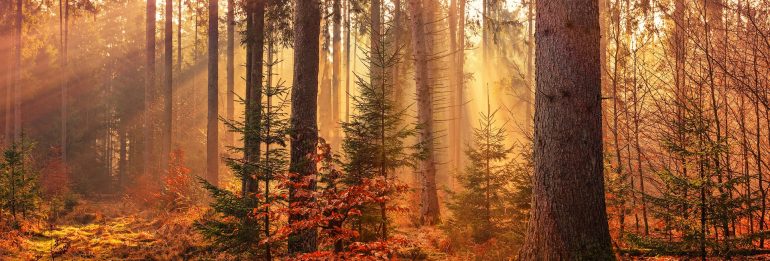The National Trust has raised alarms over the disruptive impact of climate change on the UK's natural ecosystem. According to recent observations, the loss of predictable weather patterns is wreaking havoc on wildlife and plant life across the country. These changes, increasingly evident in National Trust-managed estates, are leading to a significant shift in the seasonal behaviors of animals and the growth patterns of trees and plants.
Seasonal Baseline Shift
The phenomenon, termed as "seasonal baseline shift," is predominantly affecting animals, but also has a notable impact on flora. Ben McCarthy, head of Nature and Restoration Ecology at the National Trust, emphasized the long-term significance of these incremental seasonal shifts, noting that over a decade, the cumulative changes are substantial.
Record-Breaking Temperatures
2023 was marked by extreme weather events in the UK, including the warmest June on record and unprecedented high sea temperatures. These conditions, combined with an unusually warm winter, have facilitated the proliferation of pests and diseases.
Water Scarcity and Algal Blooms
The UK has also experienced lower water levels in rivers, lakes, and reservoirs due to reduced rainfall and higher temperatures. This has led to increased algal blooms, which in some cases, resulted in mass fish deaths due to depleted oxygen levels.
Storms and Landscape Damage
The country has not been spared from severe storms either. Notably, storms Babet and Ciaran caused significant damage to landscapes and coastlines, demonstrating the varied impacts of climate change.

Everyday Observations
The effects of these climatic shifts are visible in everyday life. For example, grass in parks and gardens needs to be mowed later in the year due to warmer and wetter conditions. Early blooming of some shrubs due to warm temperatures, followed by sudden cold snaps, is adversely affecting pollinators and birds that rely on their seeds.
Threat to Iconic Species
The UK's most iconic tree, the oak, is at risk from rising year-round temperatures. Shorter cold snaps are failing to kill off diseases, making oaks more vulnerable to pests like the oak processionary moth. This species, traditionally found in the Mediterranean, has been moving northward through Europe as the climate warms.
Impact on Wildlife
Climate change is also affecting animals, particularly those that hibernate, like dormice. These creatures are emerging from hibernation earlier, leading to a higher energy expenditure and increased vulnerability. Similarly, changes in the breeding patterns of red deer are resulting in higher mortality rates due to insufficient fat reserves for winter.
Extreme Weather Comparisons
Keith Jones, the National Climate Change consultant at the National Trust, warns against complacency. He points out that while the UK has experienced less extreme weather compared to other European regions, it is likely to face a combination of droughts, high temperatures, floods, and other severe weather events in the future.
Building Resilience
The National Trust advocates for increasing the resilience of the UK's landscapes and ecosystems. An example of this is the restoration of the river Aller in Somerset. By allowing the river to meander naturally, the project aims to enhance water retention in the landscape, combat flooding and drought, and increase biodiversity. Additionally, the newly created wetlands are expected to be effective in carbon storage, contributing to climate change mitigation efforts.
In conclusion, the National Trust's observations and initiatives underscore the urgent need to address the impacts of climate change on the UK's natural environment. The organization's efforts to adapt and build resilience in ecosystems offer a model for mitigating and adapting to these challenges.
©GlobalCO2.uk





